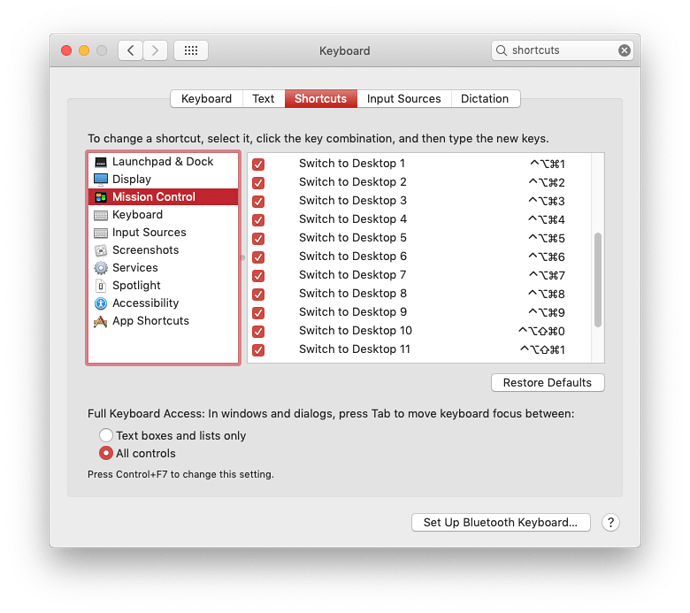Hi @August. Based on the link above and our previous correspondences, I'm assuming you are referring the shortcuts I shared. Dan? I don't even have a relative named Dan. ![]()
BTW, rather than using a link to the top of the thread, I've been directing people to Desktop Spaces • Macros for Navigation and Window Management v1.1— Post #6, because it is there that I provided a major upgrade that superseded the information in Posts #1 to #5.
You say hotkeys here, but I think you really mean macOS Keyboard Shortcuts, right? At least when we have been previously corresponding, the bulk of our discussion was related to the Keyboard Shortcuts for Mission Control:
As I mentioned previously, the macros I shared use these macOS Keyboard Shortcuts because there is no Public API to move to a specific desktop. You may recall that I said that changing these assignments would be possible, but it would require some corresponding changes to the macros. (BTW, it would actually be pretty simple because I embedded these Type Keystroke actions in a single Group action within the macros.)
Back to Hot Keys...
With respect to the Hot Keys used to trigger the macros I shared, reassignment (or deleting them) can be done quite easily. There are no dependencies from one macro to another, with one exception: the single-action macros related to the optional Conflict Palette.
Now that subroutines are available in Keyboard Maestro 10, those single-action Conflict Palette macros that currently use the Remote Trigger action could be converted to use the Execute a Subroutine action. That change with some simple changes to Go to Desktop N and Move to Desktop N (converting them to subroutines), would allow you to deassign all hot keys and drive all macro functions via a Conflict Palette.
